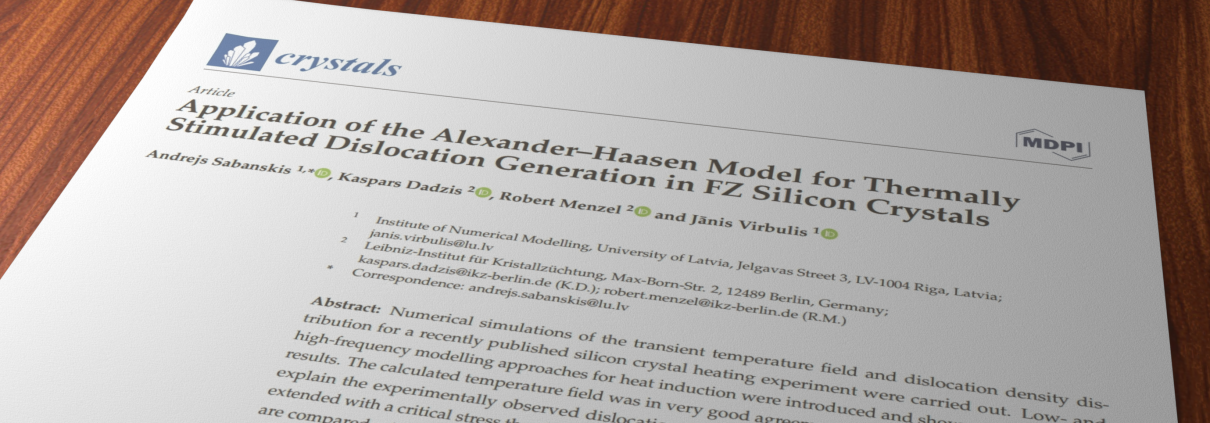New article on thermally stimulated dislocation generation in silicon crystals
Researchers Andrejs Sabanskis and Jānis Virbulis from the Institute of Numerical Modelling in collaboration with scientists Kaspars Dadzis and Robert Menzel have recently got a new research article published. The article titled Application of the Alexander – Haasen Model for Thermally Stimulated Dislocation Generation in FZ Silicon Crystals was published this year on 25th of January in the Crystals journal.
Numerical simulations of the transient temperature field and dislocation density distribution for a recently published silicon crystal heating experiment were carried out. Low- and high-frequency modelling approaches for heat induction were introduced and shown to yield similar results. The calculated temperature field was in very good agreement with the experiment.
To better explain the experimentally observed dislocation distribution, the Alexander–Haasen model was extended with a critical stress threshold below which no dislocation multiplication occurs. The results are compared with the experiment, and some remaining shortcomings in the model are discussed.
New solvers for the temperature, stress and dislocation density are developed using open-source finite element library deal.II and are freely available to all interested researchers as a new open-source solver package MACPLAS.
The full article is openly accessible here.
The article was published as part of the PostDoc project Effect of thermal stresses and growth conditions on the point defect and dislocation distributions in semiconductor crystals (1.1.1.2/VIAA/2/18/280).


